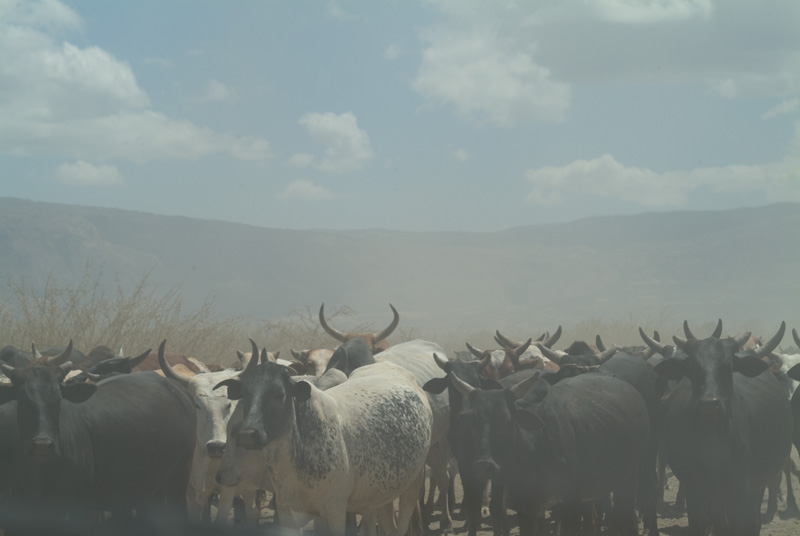 In yet another fascinating article illustrating the pervasiveness of human impacts on the environment (and in the case of water supplies, on human livelihoods), High Country News is reporting that high levels of dust settling in the Rocky Mountains are resulting in earlier snow melt.
In yet another fascinating article illustrating the pervasiveness of human impacts on the environment (and in the case of water supplies, on human livelihoods), High Country News is reporting that high levels of dust settling in the Rocky Mountains are resulting in earlier snow melt.Tom Painter, a researcher at the National Snow and Ice Data Center in Boulder, Colo., has found that dust changes the reflectivity — or albedo — of the snow surface:
White snow reflects a lot of light, so it absorbs less energy and melts relatively slowly. Dirty snow reflects less light and melts more quickly. The faster snow melts, the sooner it exposes deeper dust layers, creating a feedback loop that further accelerates the melt.The implications for the American West's water supplies, resources that have been the subject of legendary battles, are startling. Painter, along with hydrologist, Andrew Barret:
found that a single dust event could cause snow to melt away 18 days earlier than it would if there were no dust at all.So what are the causes of this dust?
In the Western mountains, which act as the region’s water towers, the implications of these rough estimates are stark. If dust deposits in the mountains increase for any reason, the researchers surmise that snowmelt will both happen faster and finish sooner, leading to bigger and earlier peak flows in streams and rivers. That would cause headaches for water managers, who would need to store the rush of water, and it would perhaps result in more frequent or serious summer water shortages.
High Country News asks U.S. Geological Survey researcher, Jayne Belnap, who explains that:
On desert grasslands that have never seen grazing, "there’s barely any dust production, no matter what"; the dust traps she posts in those areas collect perhaps a tablespoon every six months. Most years, traps in formerly grazed grasslands collect about twice as much, and currently grazed lands collect even more, about nine times as much. But the most dramatic differences, says Belnap, emerge during severe drought years. While the ungrazed grasslands stay more or less the same, formerly grazed ground produces as much as 20 times the amount of dust as in wetter years. Currently grazed lands "just go bonkers," with the dust traps sometimes filling faster than Belnap and her coworkers can empty them.
Grazing, development, off-road vehicle use, and military training activity form what Belnap calls a "background signal" of dust in the Southwestern deserts. That signal seems to be strengthening.What might the ultimate result be?
The researchers hypothesize that if dust events do continue to increase, mountain snow will melt earlier in the spring, and the summer droughts that may ensue could lead to — you guessed it — more dust, further eroding the mountains’ ability to store water. "I hate to use the word catastrophe, but that’s probably the right word," says Belnap.
"Throw climate change into the mix, and the forecast gets even more grimly interesting. So far, the effects of global warming on the higher, colder Rockies are not as marked as those in lower coastal ranges, where even a small rise in winter temperatures can turn snow into rain. But if dust keeps crowding into the mountains, says Painter, it could amplify the effects of warmer temperatures, boding ill for high-elevation snow in the Rockies and elsewhere. "If you put dust and warming together — watch out," says Painter.
This is yet another striking example of how human land uses may be combining with climate change to cause potentially catastrophic impacts to people and ecosystems alike. And when it involves threats to water supplies in the American West, we have another important practical reason to stop not just global warming, but also destructive land management practices that leave us more vulnerable to its effects.
No comments:
Post a Comment